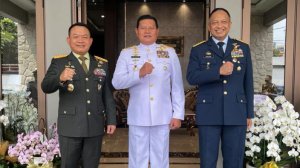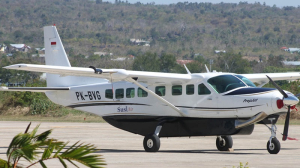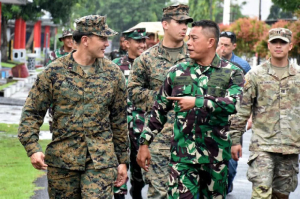Indonesia, US hold Super Garuda Shield amidst growing concern on China military rise
Indonesia, the United States and their 13 allies are holding a joint military drill that reflect their responses on the China's military rise. The Super Garuda Shield (SGS) exercise takes place on August 1-14, 2022.
Indonesian Military Commander Gen. Andika Perkasa and Commanding General of the US Army Pacific Command (USARPAC) Gen. Charles A. Flynn officiated the drill on August 3, 2022.
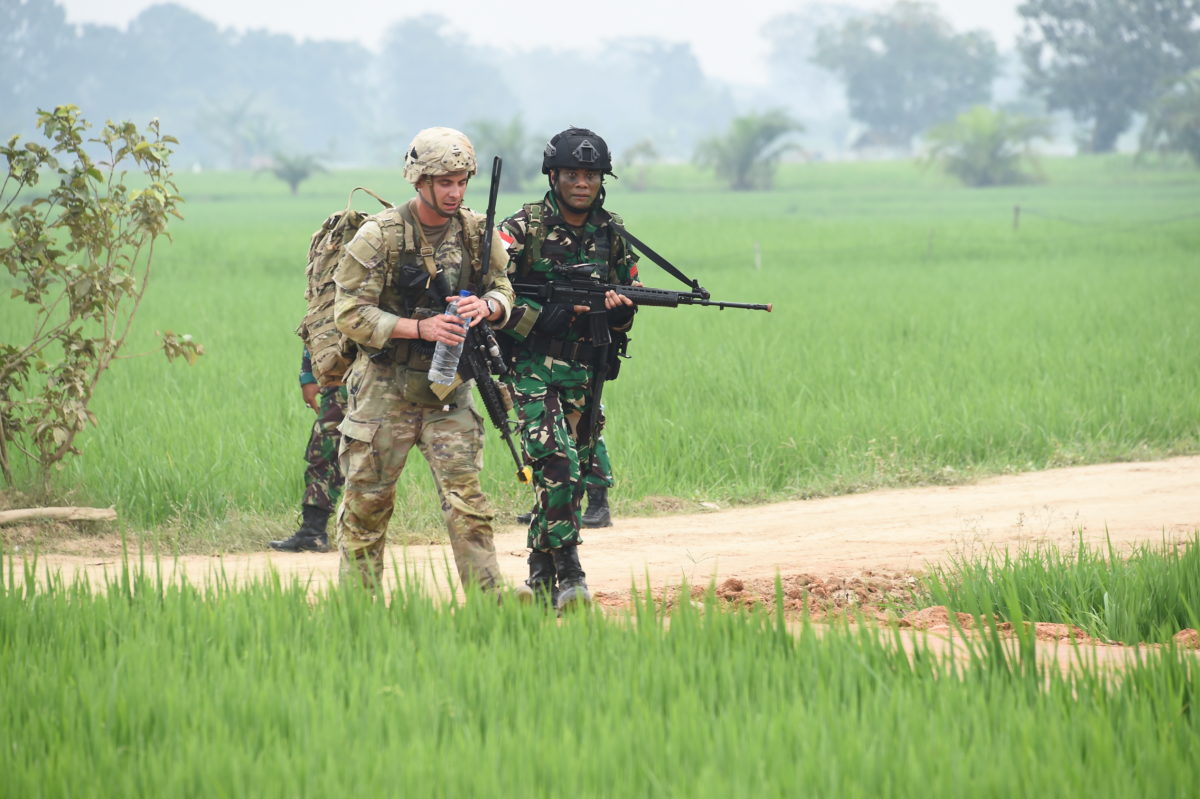
Strengthening cooperation in the region
Perkasa welcomed the US military and their allies to the joint exercise that take place at three sites namely the Combat Training Center in Baturaja (South Sumatra), the Marine Combat Training Center in Dabo Singkep (Riau Islands) and the Combat Training Center in Amborawang (East Kalimantan).
"Wherever you train, from Baturaja to Amborawang to Dobo Singkep, I hope everything runs smoothly and that it can strengthen our relationship and interaction. I hope the friendship may continue until the end of the exercise and be useful in the future," Perkasa said. "SGS 2022 is a large-scale joint training event between Indonesia and friendly countries in the Indo-Pacific region."
Super Garuda Shield is a part of Operation PATHWAYS and a longstanding annual, bilateral military exercise between the US military and TNI.
A total of 4,337 military personnel from the US, Australia, Japan, Malaysia, Singapore, Korea, Papua New Guinea, Timor Leste and host Indonesia took part in the drill. Meanwhile, the United Kingdom, Canada and India attended the event as observers. The drill is aimed at strengthening interoperability, capability, mutual trust and cooperation developed over decades and increase communication between personnel on the ground.
Flynn highlighted that the military is a stabilizing institution across the region. Armed forces are the security architecture that binds the area when soldiers and nations work together.
He said the SGS represents the enduring bond between Indonesia and the US and a symbol of regional cooperation among armed forces.
"And I believe you will find Garuda Shield 2022 challenging and rewarding as you increase your proficiency. When you build unit and collective proficiency and not just among the nations but also the army, the tactical operational and strategy," he added.
During this exercise, Flynn encouraged military personnel to get to know their fellow partners alongside the formation and out in training since they traveled a long distance across the globe to participate.
"So, capitalize on this opportunity to know each other and build relationships at the individual level because the matter army to army, they matter in the nation to nations," he added.
The SGS also provides opportunities for TNI experimentation and joint collaboration. Operation PATHWAYS is one key priority that USARPAC provides to INDOPACOM (US Indo-Pacific Command). The exercise increases readiness and interoperability of all participating nations. It focuses on specific task, tactics and procedures to conduct combined arms maneuver, air assault, aviation and mission command.
The highlights of the military drill include opening and closing ceremonies, austere airfield operations, Force Integration Training (FIT), Small Unit Training (SUT), airborne operations and training, the Combined Arms Live Fire Exercise (CALFEX), the Field Training Exercise (FTX), the Engineering Civic Assistance Projects (ENCAP), the HIMARS rapid infiltration (HIRAIN) mission, the maritime and Amphibious and the Visit, Board, Search and Seizure (VBSS) ship-to-ship operations.
During the training period, TNI and USARPAC sign an Exercise Support Agreement (ESA), under which Australia, Japan and Singapore will support Garuda Shield 16/2022. Meanwhile, the air force infantry and special forces corps have agreed with the 31st Marine Expeditionary Unit's Amphibious Reconnaissance Platoon (ARP) to conduct mission planning activities.
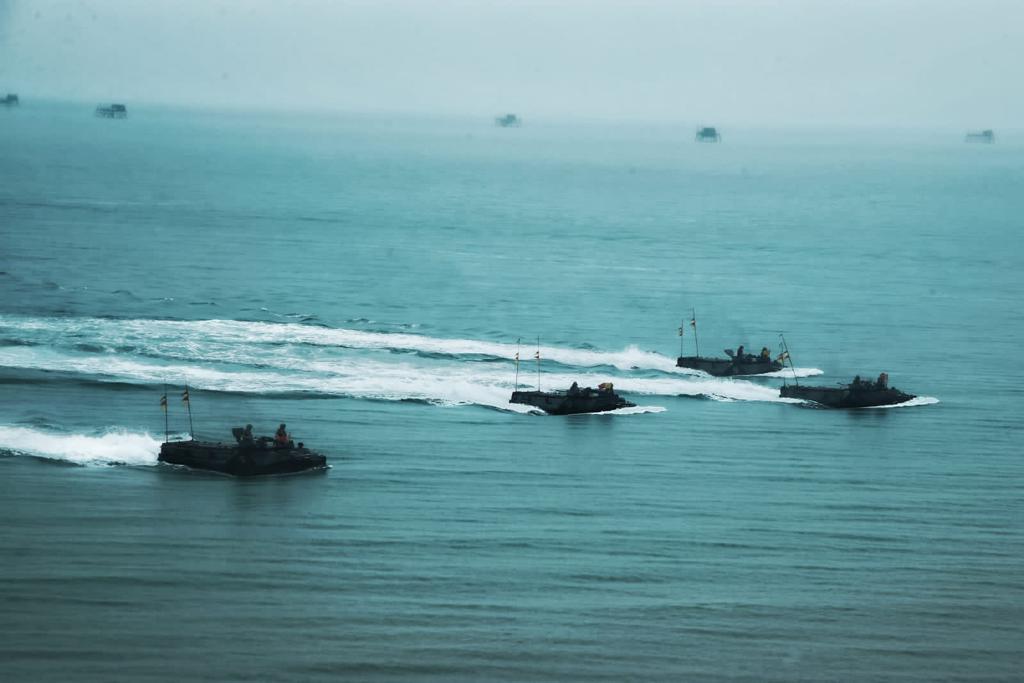
Threat from China
The SGS joint military drill is viewed as a manifestation of the common concerns on the rise of China's military capabilities.
Teuku Rezasyah, a lecturer at the School of International Relations in Bandung-based Padjajaran University (Unpad), said Indonesia has shown its tendency to support the US during the open rivalry between the US and China.
"Currently, this is the second level of the Super Garuda Shield military training, which Indonesia never had with China in the past. The training is the next step to the Garuda Shield training last year," he said.
Indonesia and the US learned from their accomplishments from the previous phase, including counterinsurgency, jungle survival, interoperability in weapon and field coordination, satellite support, and the identification of friend or foe situations, etc.
"Likewise, Indonesia can test its battle equipment and weapons, which can be used or not. By doing so, the US will be able to determine what Indonesia will need in terms of defense infrastructure," Rezasyah said.
Furthermore, this is an operational aspect of military training since the simulation is similar to a real war.
The Super Garuda Shield is not something Indonesia gave to China because Indonesia has concerns about China. "We take advantage of China's economic strength, cooperate with China, but refuse to enter into a deeper level of cooperation with China since it is a worrying phenomenon," he added.
Rezasyah said in theory, China poses a threat to Indonesia although the latter has never been in a position to identify China as a threat. However, it is essential to note that in a head-to-head comparison between China and the US, 90% of Indonesians will support the US.
In 2021, the Carnegie Endowment for International Peace reported that unclassified US intelligence assessments described China's People Liberation Army as gradually but steadily transforming itself into a joint, highly agile, expeditionary and power-projecting arm of Chinese foreign policy engaged in military diplomacy and operations around the globe.
Indonesia's Strategic Intelligence Agency (BAIS) former director Soleman B. Ponto said most of the participating nations in the 2022 Super Garuda Shield are US allies. Consequently, Indonesia's military is still perceived as a close ally of the US.
According to Ponto, all military training is a form of diplomacy. Indonesia is attempting to convey to the world, through the Super Garuda Shield, that the country still has military allies. For the US, the SGS can be an opportunity to demonstrate to the world that Indonesia remains an ally.
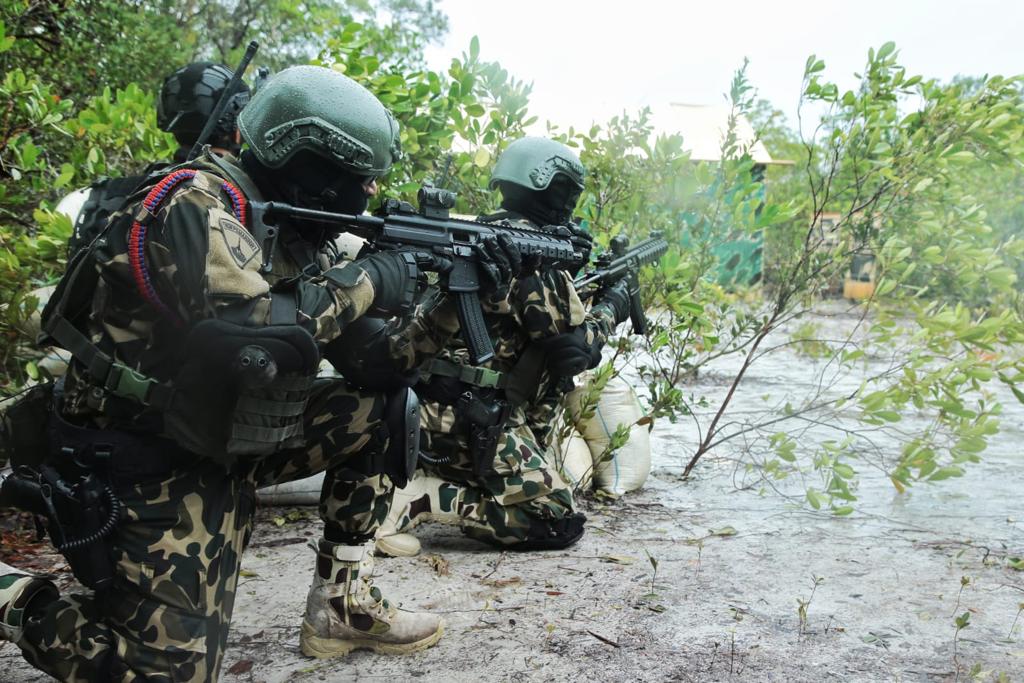
Balancing the power
During his visit to China late July 2022, President Joko Widodo engaged in economic diplomacy. Thus, the 2022 Super Garuda Shield can provide a balance that will enable Indonesia to move closer to the US on a military level.
Perkasa also denied that the SGS demonstrated a common concern about China's increasing military influence and threat in the Indo-Pacific region.
"No. This is the 16th Super Garuda Shield armed forces training. We always conduct the annual training regardless of the circumstances," he said, adding that he does not mind if some people perceive the exercise as a typical response to China.
Perkasa said it was in the interest of participating countries to take part in the military exercise together. "Because other countries do the same thing. There is no message for anyone," he emphasized.
In his remarks, Perkasa said Indonesia and China already conducted two joint military exercises in 2012 and 2013. If the military exercise does not continue, this may be because China does not place a high priority on Indonesia. Both parties must meet their respective needs to conduct a joint military exercise.
"We are paying for this drill, and the US and Australia are paying for it themselves. In addition, France pays for itself. No one pays others to participate in the drill. If they [China] do not see the drill as a priority, then it is fine," he said, adding that Indonesia is open to conduct such an exercise with China.
Defense Analyst Connie Rahakundini Bakrie suggested that Indonesia conduct military drills with Russia and China to reiterate its commitment to non-alignment.
"Having military training with Russia, China, or Iran would demonstrate that Indonesia's foreign policy does not depart from its non-alignment principle," she added.
Already have an account? Sign In
-
Start reading
Freemium
-
Monthly Subscription
30% OFF$26.03
$37.19/MonthCancel anytime
This offer is open to all new subscribers!
Subscribe now -
Yearly Subscription
33% OFF$228.13
$340.5/YearCancel anytime
This offer is open to all new subscribers!
Subscribe now



